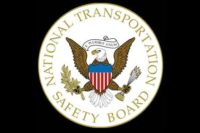The U.S. Department of Labor announced a final rule clarifying the rights of employees to authorize a representative to accompany an OSHA compliance officer during an inspection of their workplace will be published in the Federal Register on April 1.
The Occupational Safety and Health Act gives the employer and employees the right to authorize a representative to accompany OSHA officials during a workplace inspection. The final rule clarifies that, consistent with the law, workers may authorize another employee to serve as their representative or select a non-employee. For a non-employee representative to accompany the compliance officer in a workplace, they must be reasonably necessary to conduct an effective and thorough inspection.
Consistent with OSHA’s historic practice, the rule clarifies that a non-employee representative may be reasonably necessary based upon skills, knowledge or experience. This experience may include knowledge or experience with hazards or conditions in the workplace or similar workplaces, or language or communication skills to ensure an effective and thorough inspection. These revisions better align OSHA’s regulation with the OSH Act and enable the agency to conduct more effective inspections. OSHA regulations require no specific qualifications for employer representatives or for employee representatives who are employed by the employer.
The rule is in part a response to a 2017 court decision ruling the agency’s existing regulation, 29 CFR 1903.8(c), only permitted employees of the employer to be authorized as representatives. However, the court acknowledged that the OSH Act does not limit who can serve as an employee representative and that OSHA’s historic practice was a “persuasive and valid construction” of the OSH Act. Today’s final rule is the culmination of notice and comment rulemaking that clarifies OSHA’s inspection regulation and aligns with OSHA’s longstanding construction of the act.
“Worker involvement in the inspection process is essential for thorough and effective inspections and making workplaces safer,” said Assistant Secretary for Occupational Safety and Health Doug Parker. “The Occupational Safety and Health Act gives employers and employees equal opportunity for choosing representation during the OSHA inspection process, and this rule returns us to the fair, balanced approach Congress intended.”
The rule is effective on May 31, 2024.


